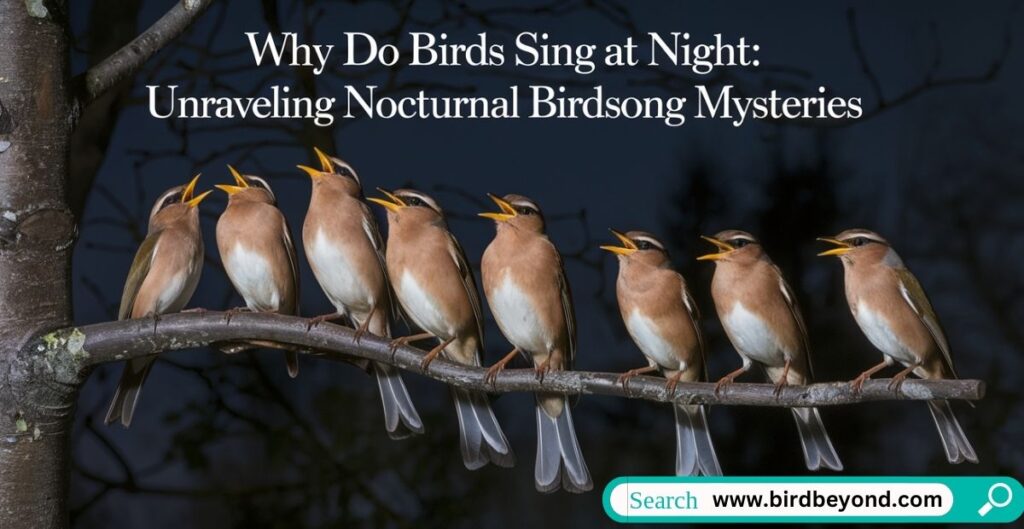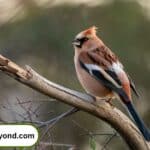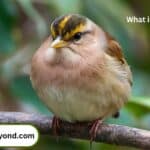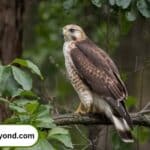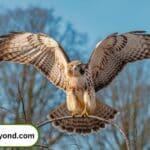Have you ever been startled awake by a melodious trill piercing through the stillness of the night? You’re not alone. The phenomenon of birds singing at night has puzzled and fascinated humans for centuries. In this comprehensive exploration, we’ll dive deep into the world of nocturnal birdsong, uncovering the mysteries behind why birds sing at night and the fascinating adaptations that drive this behavior.
I. Introduction: The Nighttime Symphony
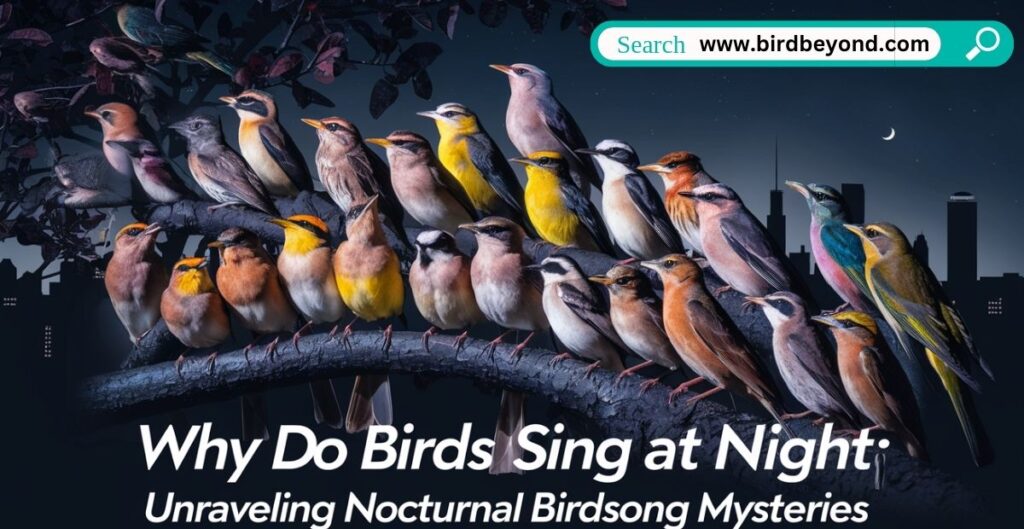
It’s 2 AM, and you’re nestled in your bed, drifting off to sleep. Suddenly, a clear, haunting melody breaks through the silence. It’s not your imagination – it’s a bird, serenading the night.
Nocturnal birdsong is a captivating natural phenomenon that has intrigued ornithologists, nature enthusiasts, and casual observers alike. While we typically associate birdsong with the cheerful chorus of dawn, many species break this mold, filling the night air with their vocalizations.
This nighttime concert isn’t just a random occurrence. It’s a complex behavior driven by various factors, including biology, environment, and survival strategies. As we delve into the reasons behind nocturnal birdsong, we’ll uncover a world of adaptation and resilience that showcases the remarkable versatility of our feathered friends.
II. Nocturnal Crooners: Who’s Singing After Dark?
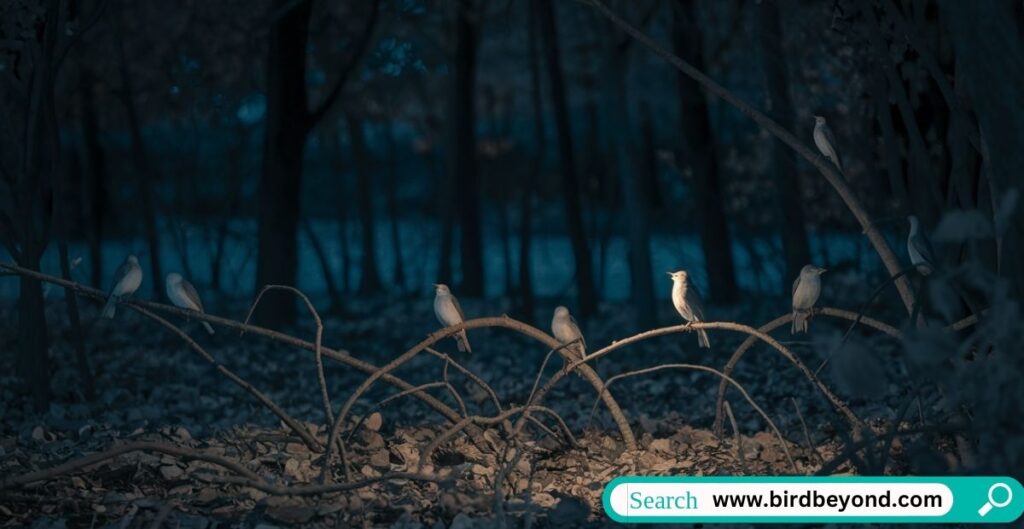
When we think of birds singing at night, a few star performers come to mind. Let’s meet some of these nocturnal virtuosos:
- Common Nightingale: Perhaps the most famous night singer, celebrated in poetry and song for its beautiful melodies.
- Whip-poor-will: Named for its distinctive call, this bird is more often heard than seen.
- Mockingbird: Known for its ability to mimic other birds and even mechanical sounds, mockingbirds can sing all night long.
- Barn Owl: While not melodious, its eerie screech is a common nighttime sound in many areas.
- American Robin: Though typically associated with daytime, robins often sing at night in urban areas.
But it’s not just these usual suspects that contribute to the nighttime chorus. Some surprising daytime birds occasionally join in:
- European Robin: In cities with high light pollution, these birds may sing at night, mistaking artificial light for dawn.
- Blackbird: Another species known to sing at night in urban environments.
- Thrushes: Various thrush species, including the Song Thrush, may vocalize after dark.
“The night is alive with the sound of birds, each species adding its unique voice to the nocturnal symphony.” – Dr. Jane Goodall
This diverse cast of nocturnal singers highlights the complexity of bird behavior and the adaptability of different species to various environmental conditions.
III. The Science Behind the Songs
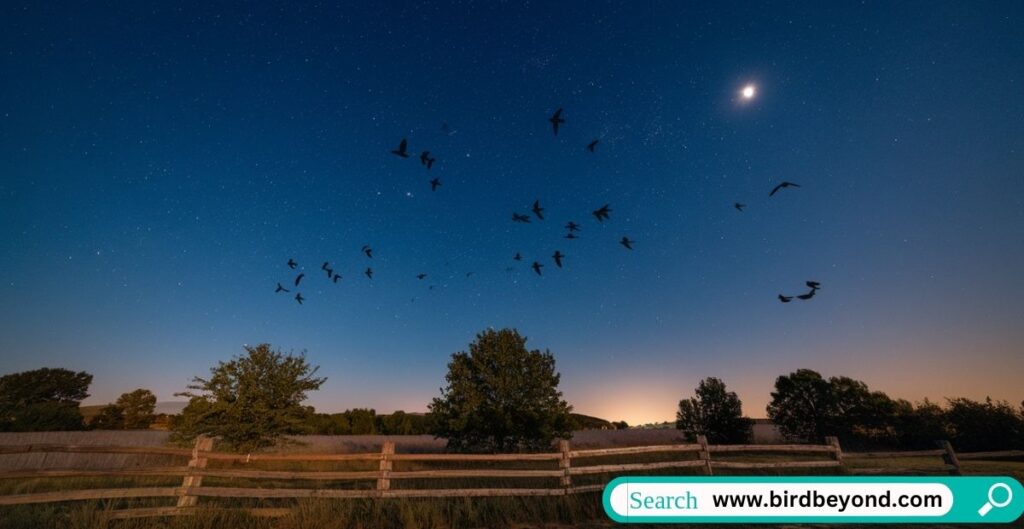
To understand why birds sing at night, we need to delve into the intricate world of avian biology. Several key factors influence this behavior:
Circadian Rhythms and Bird Behavior
Circadian rhythms, the internal biological clocks that regulate sleep-wake cycles, play a crucial role in bird behavior. These rhythms are typically synchronized with the light-dark cycle of the environment. However, some birds have evolved to be active during nighttime hours, altering their circadian rhythms accordingly.
Key Points:
- Birds have specialized cells in their brains that detect light and regulate circadian rhythms.
- Some nocturnal species have adapted to have reversed circadian rhythms compared to diurnal birds.
- Environmental factors can influence these rhythms, leading to changes in singing patterns.
Hormonal Changes Triggering Nighttime Vocalizations
Hormones play a significant role in bird behavior, including singing. The production and release of certain hormones can trigger vocalizations at various times, including at night.
Important Hormones:
- Melatonin: Regulates sleep-wake cycles
- Testosterone: Influences singing behavior, especially during breeding season
- Corticosterone: Stress hormone that can affect singing patterns
The Role of Melatonin
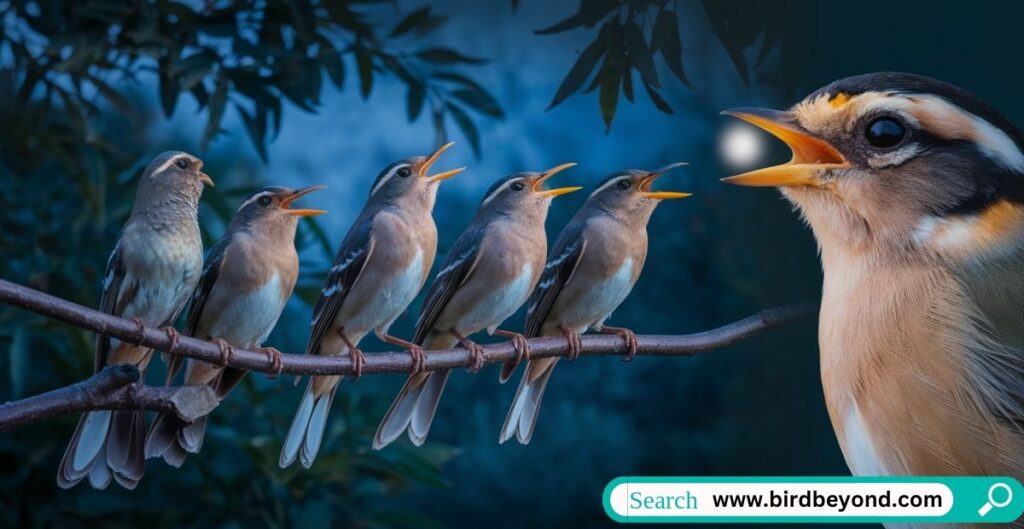
Melatonin deserves special attention when discussing nocturnal birdsong. This hormone, often called the “sleep hormone,” plays a crucial role in regulating sleep-wake cycles in birds, as it does in humans.
Melatonin’s Impact on Nocturnal Singing:
- Typically suppresses daytime activity in diurnal birds
- In nocturnal species, melatonin production may be reversed or altered
- Light pollution can disrupt melatonin production, leading to changes in singing behavior
Understanding these biological mechanisms helps explain why birds sing at night and how environmental factors can influence this behavior. It’s a testament to the intricate balance between internal biology and external stimuli in the avian world.
IV. Urban Nightlife: City Lights and Birdsong
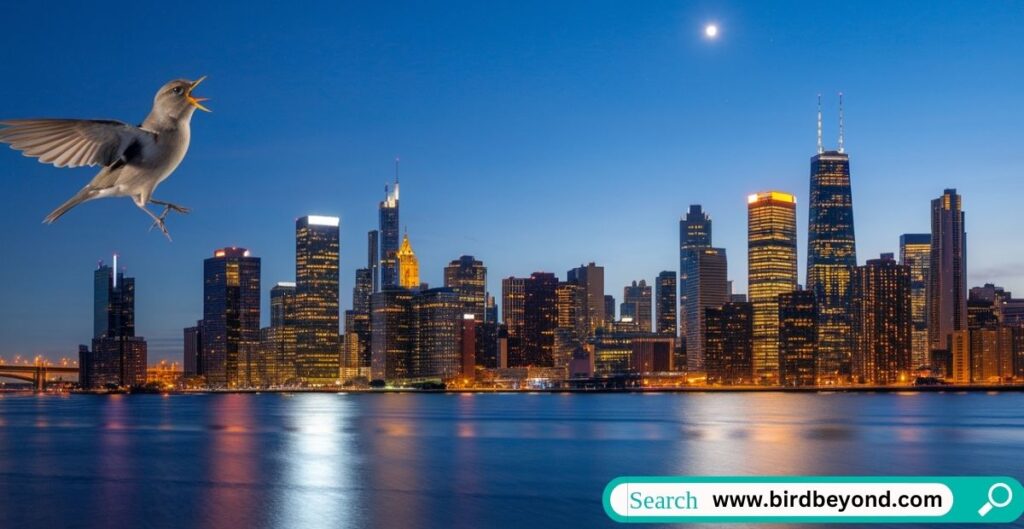
The urban environment presents unique challenges and opportunities for birds, particularly when it comes to nocturnal singing. Artificial lighting, a hallmark of city life, has a profound impact on bird behavior.
How Artificial Lighting Disrupts Natural Patterns
Urban areas are bathed in artificial light, creating a phenomenon known as “sky glow.” This constant illumination can have several effects on birds:
- Confusion of day-night cycles
- Extended activity periods
- Altered feeding patterns
- Disrupted migration schedules
Case Study: European Robins in UK Cities
A study conducted by researchers at the University of Southampton found that European Robins in urban areas were more likely to sing at night than their rural counterparts. The study concluded that artificial lighting was the primary factor influencing this behavior.
| Location | Percentage of Robins Singing at Night |
|---|---|
| City Center | 61% |
| Suburban Areas | 42% |
| Rural Areas | 12% |
This data clearly demonstrates the impact of urban environments on nocturnal birdsong.
The “Ecological Trap” Phenomenon
While the ability to sing and be active at night might seem like an advantage, it can actually be detrimental to bird populations. This situation is known as an “ecological trap.”
Consequences of the Ecological Trap:
- Increased energy expenditure
- Higher predation risk
- Reduced breeding success
- Disrupted natural behaviors
“Urban environments are creating an artificial world for birds, one that may look like an opportunity but can actually be a threat to their survival.” – Dr. Emily Brown, Urban Ecologist
Understanding these urban influences on nocturnal birdsong is crucial for conservation efforts and urban planning. It highlights the need for dark sky initiatives and more bird-friendly urban designs.
V. Love in the Dark: Nocturnal Mating Calls

One of the primary reasons birds sing at night is for courtship and mating. The cover of darkness provides a unique opportunity for birds to attract mates and establish pair bonds.
Nighttime as Prime Real Estate for Courtship Displays
Several factors make night an ideal time for courtship:
- Reduced Competition: Fewer birds are active, allowing individual songs to stand out.
- Lower Predation Risk: Many visual predators are less active at night.
- Cooler Temperatures: In hot climates, nighttime offers more comfortable conditions for energetic displays.
The Effectiveness of Night Serenades in Attracting Mates
Nocturnal singing can be a highly effective mating strategy. Here’s why:
- Sound Travels Further: Cooler night air allows sound to travel farther with less distortion.
- Fewer Distractions: The relative quiet of night allows for clearer communication.
- Display of Fitness: Singing at night requires extra energy, potentially signaling good health to potential mates.
Species-Specific Strategies
Different bird species have evolved unique strategies for nocturnal courtship:
Corncrakes: These birds have a distinctive rasping call that can be heard up to 1 km away. Males will call throughout the night during breeding season.
Nightingales: Known for their complex and beautiful songs, male nightingales can sing for hours on end to attract females.
Whip-poor-wills: Their repetitive call gives them their name and can continue for long periods without pause.
“The night air carries the love songs of birds, each species with its own unique serenade to woo potential mates.” – Dr. Sarah Collins, Ornithologist
Understanding these nocturnal mating strategies provides insight into the evolutionary adaptations of different bird species and the importance of preserving natural soundscapes for their continued success.
VI. Territorial Tunes: Claiming Space After Sunset
While courtship is a significant driver of nocturnal birdsong, territory defense is equally important. Some birds have adapted to defend their territories around the clock, using nighttime vocalizations as a key strategy.
Why Some Birds Defend Territory 24/7
Continuous territory defense offers several advantages:
- Resource Protection: Ensuring exclusive access to food sources and nesting sites.
- Mate Guarding: Preventing rivals from approaching a partner.
- Predator Deterrence: Constant vigilance can help ward off potential threats.
The Advantages of Nighttime Territory Announcements
Singing at night to defend territory has unique benefits:
- Reduced Interference: Less competing noise allows for clearer communication.
- Energy Efficiency: Cooler temperatures can make prolonged singing less taxing.
- Surprise Factor: Catching potential intruders off guard during typically quiet hours.
How Nocturnal Singing Affects Daytime Bird Behavior
The practice of nighttime territory defense can have ripple effects on daytime bird behavior:
Impacts on Daytime Behavior:
- Altered sleep patterns for both defenders and neighbors
- Shifts in feeding schedules to accommodate nighttime activity
- Changes in social interactions and flock dynamics
Case Study: American Robin Territory Defense
Research conducted at the University of Alberta found that American Robins in urban areas engaged in more nighttime singing for territory defense compared to their rural counterparts.
| Behavior | Urban Robins | Rural Robins |
|---|---|---|
| Nighttime Singing | 73% | 35% |
| Territory Size | Smaller | Larger |
| Daytime Activity | Decreased | Normal |
This study highlights how urban environments can alter natural behaviors and the importance of nocturnal vocalizations in adapting to these changes.
“The night is not just for sleep in the bird world. It’s a time for staking claims and drawing lines in the sand – or rather, in the air.” – Dr. Michael Parsons, Behavioral Ecologist
Understanding the territorial aspects of nocturnal birdsong provides valuable insights into avian social dynamics and the complex strategies birds employ to survive and thrive in various environments.
VII. Safety in Sound: Predator Avoidance Strategies
It might seem counterintuitive, but singing at night can actually be a survival strategy for some birds. Nocturnal vocalizations play a crucial role in predator avoidance and group safety.
Using Song to Coordinate Group Movements at Night
For birds that move in flocks, nighttime vocalizations serve as a vital communication tool:
- Maintaining Cohesion: Soft calls help keep the group together in the dark.
- Signaling Direction: Leaders can guide the flock using specific vocalizations.
- Alerting to Obstacles: Warning calls can help avoid collisions during flight.
Warning Calls and Their Importance in the Dark
Not all nocturnal bird sounds are melodious songs. Many are short, sharp calls designed to alert others to danger:
Types of Warning Calls:
- High-pitched alarm calls
- Low, guttural warning sounds
- Mimicry of predator calls to confuse or deter threats
The Counterintuitive Nature of Singing to Stay Safe
While it might seem that making noise would attract predators, vocalizing can actually enhance safety in several ways:
- Predator Confusion: Multiple birds calling can make it difficult for predators to locate individuals.
- Strength in Numbers: Calling can attract other birds, creating a larger, safer group.
- Deterrence: Some predators may avoid areas with a lot of bird activity.
“In the world of birds, silence isn’t always golden. Sometimes, safety lies in the symphony of voices raised against the night.” – Dr. Elena Rodriguez, Avian Behaviorist
Case Study: European Starlings
Research on European Starlings has shown that they use a variety of vocalizations at night to maintain flock cohesion and warn of potential dangers.
| Vocalization Type | Purpose | Frequency |
|---|---|---|
| Soft Chirps | Group Cohesion | Constant |
| Sharp Clicks | Direction Change | As Needed |
| Loud Squawks | Predator Alert | Rare |
This sophisticated system of nighttime communication demonstrates the complex social structures and survival strategies employed by birds.
Understanding these safety-oriented vocalizations provides insight into the multifaceted nature of nocturnal birdsong and the intricate ways birds have adapted to navigate the challenges of nighttime survival.
VIII. Seasonal Serenades: How Time of Year Affects Nocturnal Song
The changing seasons play a significant role in bird behavior, including their nighttime singing patterns. Various factors, from migration to breeding cycles, influence when and why birds vocalize after dark.
Migration’s Influence on Nighttime Vocalizations
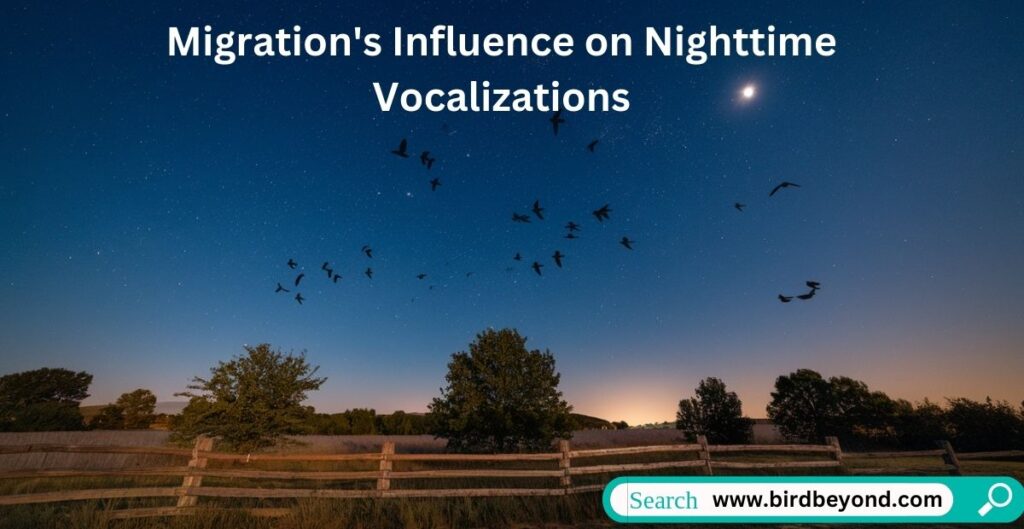
Many birds migrate at night, and vocalizations play a crucial role in this process:
- Navigation: Calls help maintain flock cohesion during nighttime flights.
- Communication: Birds share information about rest stops and feeding areas.
- Energy Conservation: Night migration allows for cooler, more efficient travel.
Migratory Species Known for Nocturnal Calls:
- Thrushes
- Warblers
- Sandpipers
Breeding Season’s Impact on Singing Patterns
The onset of breeding season often correlates with an increase in nocturnal singing:
Reasons for Increased Nighttime Singing During Breeding Season:
- Hormone surges (particularly testosterone) stimulate singing behavior
- Competition for mates intensifies
- Territory establishment and defense become crucial
“The night air in spring is filled with the hopes and dreams of bird-kind, each song a testimony to the power of life and renewal.” – Dr. Amanda Chen, Reproductive Biologist
Winter’s Unique Challenges and Opportunities for Nocturnal Singers
Winter brings its own set of factors influencing nocturnal birdsong:
- Food Scarcity: Some birds may vocalize at night to coordinate group foraging.
- Shorter Days: Less daylight may push some activities, including singing, into nighttime hours.
- Temperature Regulation: Nighttime singing may help birds maintain body heat in cold weather.
Case Study: European Robin Winter Singing
Research has shown that European Robins increase their nighttime singing during winter months, particularly in urban areas with artificial lighting.
| Season | Percentage of Robins Singing at Night |
|---|---|
| Spring | 45% |
| Summer | 30% |
| Autumn | 35% |
| Winter | 60% |
This data demonstrates how seasonal changes and urban environments interact to influence nocturnal birdsong patterns.
Understanding these seasonal variations in nocturnal singing behavior provides valuable insights into the adaptability of birds and the complex interplay between environmental factors and avian biology.
IX. Weather’s Influence: When the Climate Conducts the Chorus
Weather conditions play a significant role in shaping nocturnal birdsong patterns. From moonlight to temperature, various meteorological factors can influence when and how birds vocalize at night.
How Moonlight Affects Singing Behavior
The moon’s presence and phase can have a notable impact on nocturnal bird activity:
- Increased Visibility: Brighter nights may encourage more singing and activity.
- Predation Risk: Full moons might reduce singing in some species due to increased predator visibility.
- Lunar Cycle Synchronization: Some birds may time their breeding cycles with lunar phases.
Birds Known to be Influenced by Moonlight:
- Nightingales
- Mockingbirds
- Whip-poor-wills
The Impact of Temperature and Humidity on Sound Travel at Night
Atmospheric conditions significantly affect how bird vocalizations travel through the air:
Temperature Effects:
- Warmer air tends to make sound travel upward
- Cool air near the ground can create a “sound channel,” allowing vocalizations to travel further
Humidity Impacts:
- Higher humidity generally allows sound to travel further
- Very dry conditions can dampen sound propagation
“The atmosphere is nature’s amplifier, and birds are the maestros who have learned to play it perfectly.” – Dr. Robert Thompson, Acoustic Ecologist
Extreme Weather Events and Their Effect on Nocturnal Birdsong
Severe weather can dramatically alter bird behavior, including their nighttime vocalizations:
- Storms: May suppress singing due to noise interference and safety concerns
- Heatwaves: Can lead to increased nighttime activity and singing as birds avoid daytime heat
- Cold Snaps: Might reduce overall activity but increase group vocalizations for warmth and cohesion
Why do birds sing at night instead of during the day?
Birds sing at night for various reasons, including mating calls, territory defense, and navigation during migration. Some species are naturally nocturnal, while others may be influenced by artificial lighting in urban areas. Nighttime can also offer advantages like reduced competition for acoustic space and cooler temperatures for energy-intensive activities.
Which birds are known for their nighttime singing?
Common nocturnal songsters include nightingales, whip-poor-wills, mockingbirds, and barn owls. In urban areas, you might also hear European robins, blackbirds, and American robins singing after dark. Each species has its own unique calls and reasons for nighttime vocalizations.
FAQs
Does artificial lighting affect birds’ nighttime singing habits?
Yes, artificial lighting significantly impacts birds’ singing habits. Urban light pollution can disrupt natural circadian rhythms, causing some diurnal birds to sing at night. This phenomenon, known as the “ecological trap,” can lead to extended activity periods and altered feeding patterns, potentially affecting birds’ health and breeding success.
How do seasons affect nocturnal birdsong?
Seasons play a crucial role in nocturnal birdsong patterns. During migration seasons, many birds vocalize at night to maintain flock cohesion. Breeding season often sees an increase in nighttime singing due to hormonal changes and competition for mates. Winter may push some singing activities into nighttime hours due to shorter days and the need for warmth.
Can weather conditions influence birds’ nighttime singing?
Weather significantly affects nocturnal birdsong. Moonlight can increase singing activity in some species, while others may become quieter due to increased predation risk. Temperature and humidity impact how far sound travels, with cooler, more humid nights often allowing birdsong to carry further. Extreme weather events like storms or heatwaves can also alter singing patterns.
Is nighttime singing harmful to birds?
While nighttime singing is a natural behavior for many bird species, excessive nocturnal activity due to artificial lighting or urban noise can be detrimental. It may lead to increased energy expenditure, higher predation risk, and reduced breeding success. However, for naturally nocturnal species, nighttime singing is an essential part of their lifestyle and survival strategy.

William Henry is a distinguished blogger with a flair for avian storytelling. With a wealth of experience, he delivers captivating insights and expert knowledge to Bird Beyond. William’s passion for birds and his engaging writing style make him a standout voice in the birdwatching community, offering readers both valuable information and delightful narratives.

